Newcastle gained a reputation as a "hellhole" as it was a place where the most dangerous convicts were sent to dig in the coal mines as harsh punishment for their crimes. By the start of the 19th century the mouth of the Hunter River was being visited by diverse groups of men, including coal diggers, timber-cutters, and more escaped convicts. Philip Gidley King,
the Governor of New South Wales from 1800, decided on a more positive approach to exploit the now obvious natural resources of the Hunter Valley. In 1801, a convict
camp called King's Town (named after Governor King) was established to
mine coal and cut timber. In the same year, the first shipment of coal was dispatched to
Sydney. This settlement closed less than a year later.
Settlement was again attempted in 1804, as a place of secondary punishment for unruly convicts.
The settlement was named Coal River, also Kingstown and then renamed
Newcastle, after England's famous coal port. The name first appeared by the commission issued by Governor King on 15 March 1804 to Lieutenant Charles
Menzies of the marine detachment on HMS Calcutta, then at
Port Jackson, appointing him superintendent of the new settlement.The new settlement, comprising convicts and a military guard, arrived at the Hunter River on 27 March 1804 in three ships:
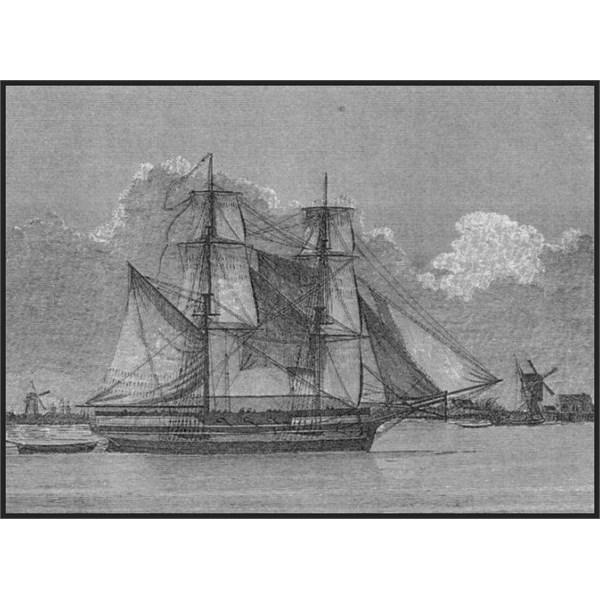
Lady Nelson H.M. Armed Tender 1798-1825
HMS Lady
Nelson, the Resource and the James. The convicts were rebels from the 1804
Castle Hill convict rebellion. The link with
Newcastle upon Tyne, England its namesake and also whence many of the 19th century coal miners came, is still obvious in some of the place-names – such as Jesmond, Hexham, Wickham, Wallsend and Gateshead. Morpeth, New South Wales is a similar distance north of
Newcastle as Morpeth, Northumberland is north of
Newcastle upon Tyne.
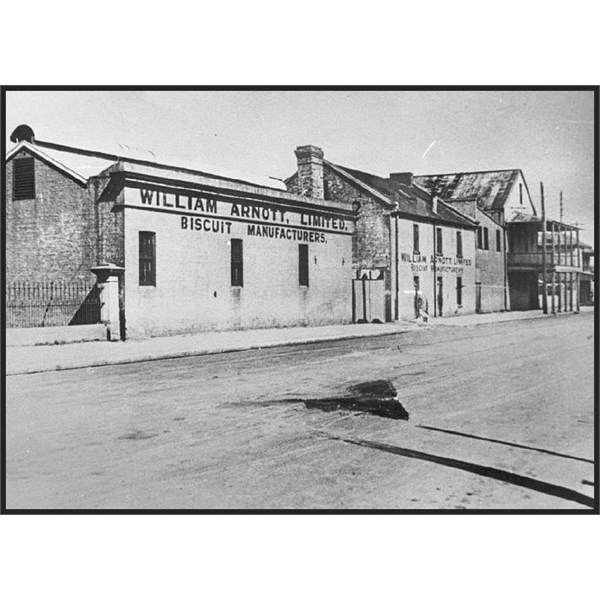
The Arnott biscuit factory around 1870 - 1880
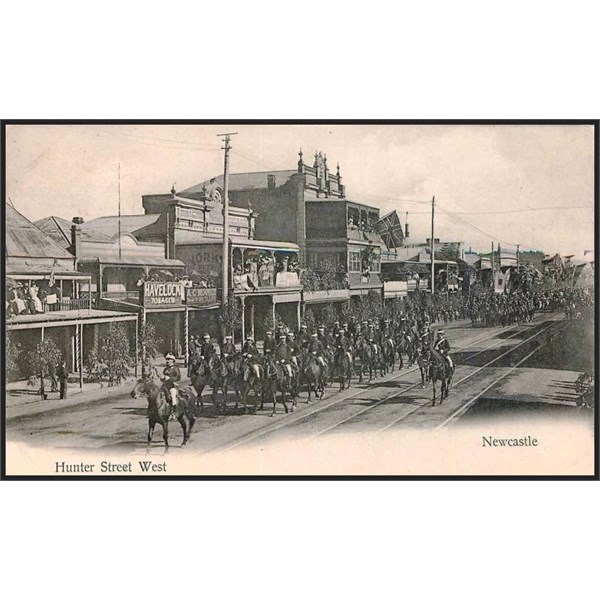
A parade of mounted soldiers along Hunter Street West, c. 1908
Under Captain James Wallis, commandant from 1815 to 1818, the convicts' conditions improved, and a building boom began. Captain Wallis laid out the streets of the town, built the first church of the site of the present Christ Church Anglican Cathedral, erected the old gaol on the seashore, and began work on the breakwater which now joins Nobbys Head to the mainland. The quality of these first buildings was poor, and only (a much reinforced) breakwater survives. During this period, in 1816, the oldest public school in Australia was built in East
Newcastle.
Newcastle remained a penal settlement until 1822, when
the settlement was opened up to farming. As a penal colony, the military rule was harsh, especially at Limeburners' Bay, on the inner side of
Stockton peninsula. There, convicts were sent to burn oyster shells for making lime. Military rule in
Newcastle ended in 1823. Prisoner numbers were reduced to 100 (most of these were employed on the building of the breakwater), and the remaining 900 were sent to Port Macquarie. After removal of the last convicts in 1823, the town was freed from the infamous influence of the penal law. It began to acquire the aspect of a typical Australian pioneer settlement, and a steady flow of free settlers poured into the hinterland.
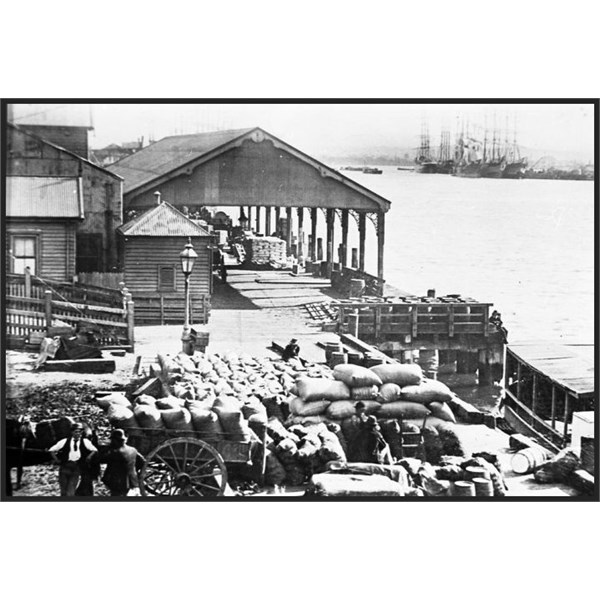
Hunter River Steamship Company wharf, Newcastle Harbour NSW, 1900
The formation during the nineteenth century of the
Newcastle and Hunter River Steamship Company saw the establishment of regular steamship
services from Morpeth and
Newcastle with
Sydney. The company had a fleet of freighters as
well as several fast passenger vessels, including the PS
Newcastle and the PS Namoi. The Namoi had first-class cabins with the latest facilities. Because of the coal supply, small ships plied between
Newcastle and
Sydney,
Brisbane,
Melbourne and
Adelaide, carrying coal to gas works and bunkers for shipping, and railways. These were commonly known as "sixty-milers", referring to the nautical journey between
Newcastle and
Sydney. These ships continued in service until recent times.
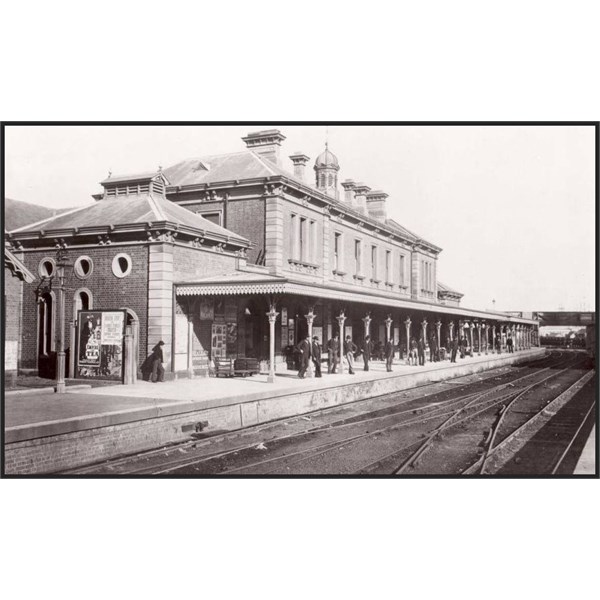
Newcastle Railway Station circa 1890
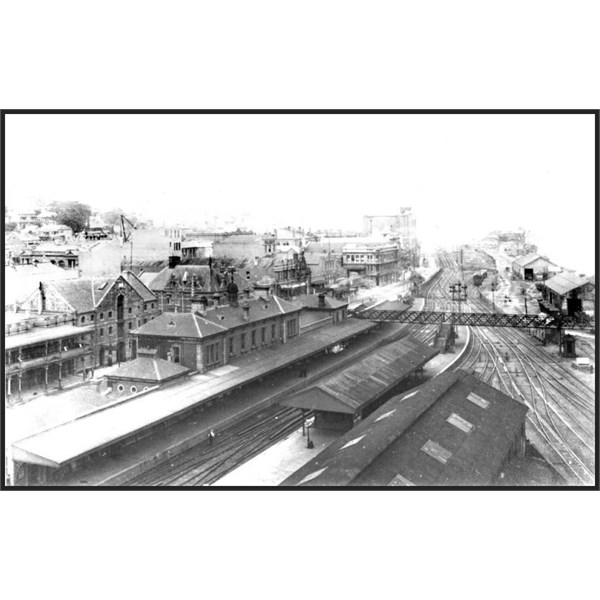
Newcastle Railway Station, 1930's
During World War II,
Newcastle was an important industrial centre for the Australian war effort. In the early hours of 8 June 1942, the Japanese submarine I-21 briefly shelled
Newcastle. Among the areas hit within the city were dockyards, the steel works, Parnell Place in the city's East End, the breakwall and Art Deco ocean baths. There were no casualties in the attack and damage was minimal. The Port of
Newcastle remains the economic and trade centre for the resource rich Hunter Valley and for much of the north and northwest of New South Wales.
Newcastle is the world's largest coal export port and Australia's oldest and second largest tonnage throughput port, with over 3,000 shipping movements handling cargo of 95.8 Mt per annum, of which coal exports represented 90.8 Mt in 2008–09. The volume of coal exported, and attempts to increase coal exports, are opposed by environmental groups.
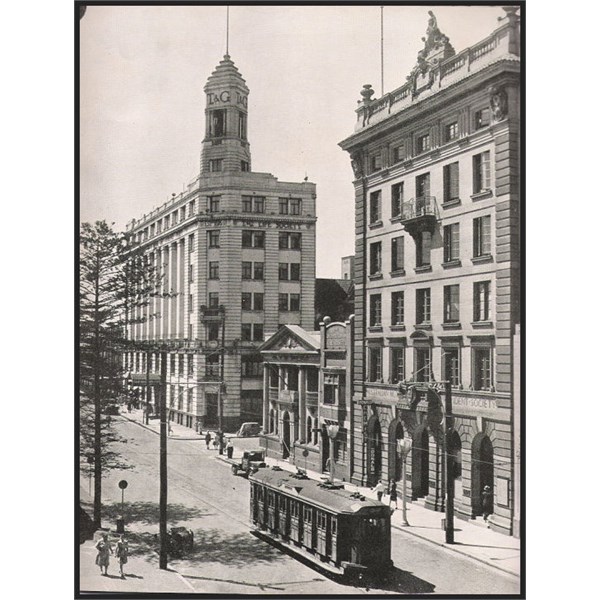
A tram halts outside the AMP building at the eastern end of Hunter Street, 1947
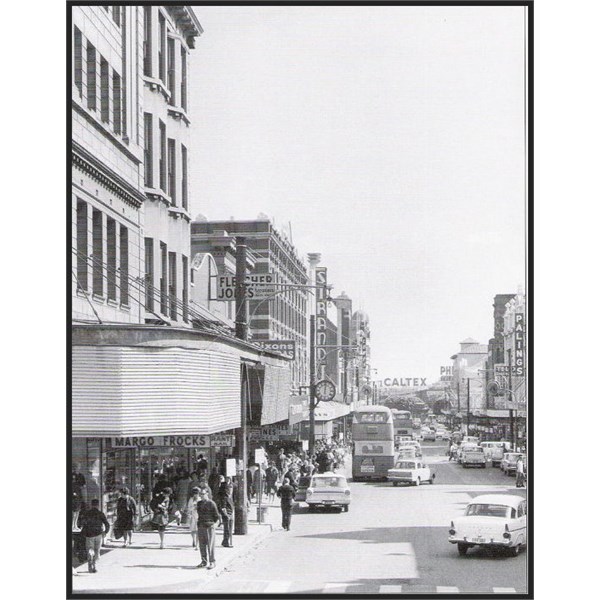
A bustling Hunter Street, 1968.
had a shipbuilding industry with the Walsh Island Dockyard and Engineering Works, State Dockyard and Forgacs Shipyard. In recent years the only major ship-construction contract awarded to the area was the construction of the Huon-class minehunters. The era of extensive heavy industry passed when the steel works closed in 1999. Many of the remaining manufacturing industries have located themselves
well away from the city itself.
Newcastle has one of the oldest theatre districts in Australia. Victoria Theatre on Perkins Street is the oldest purpose-built theatre in the country. The theatre district that occupied the area around what is now the Hunter Street Mall vanished during the 1940s. The old city centre has seen some new apartments and hotels built in recent years, but the rate of commercial and retail occupation remains low while alternate suburban centres have become more important. The CBD itself is shifting to the west, towards the major urban renewal area known as "Honeysuckle". This renewal, to run for another 10 years, is a major part of arresting the shift of business and residents to the suburbs. Commercial renewal has been accompanied by cultural renaissance. There is a vibrant arts scene in the city including a highly regarded
art gallery, and an active Hunter Writers' Centre . Recent fictional representations (for example Antoinette Eklund's 'Steel River') present a new vision of the city, using the city's historic past as a backdrop for contemporary fiction.
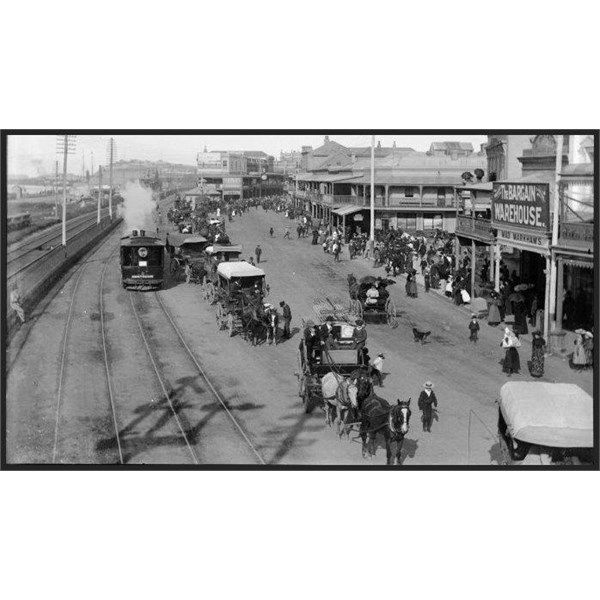
A steam tram on Scott Street, Newcastle East, turn of last century
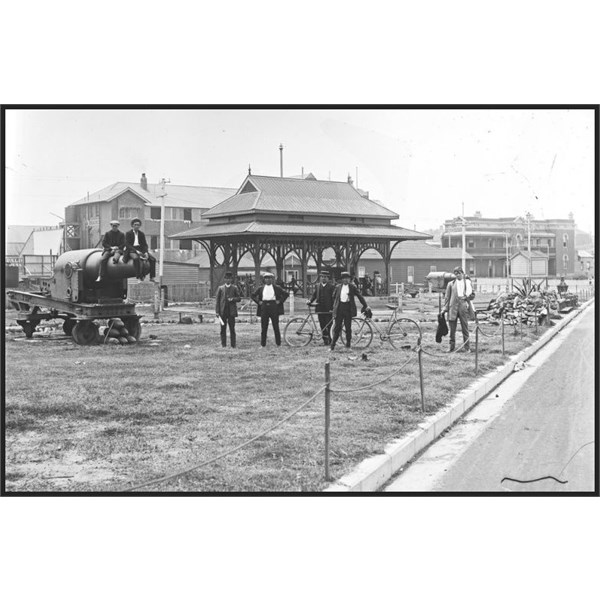
Shortland Park, Newcastle, NSW, 1907
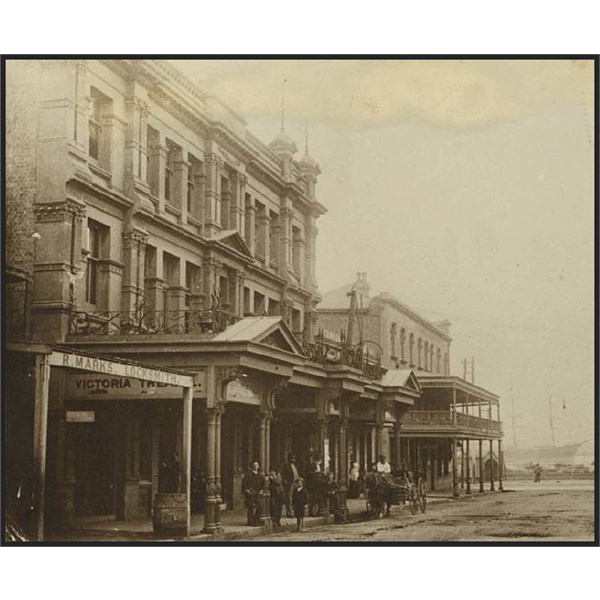
The Victoria Theatre was built in the 1870s
The old central business district, located at
Newcastle's eastern end, still has a considerable number of historic buildings, dominated by Christ Church Cathedral,
seat of the Anglican Bishop of
Newcastle. Other noteworthy buildings include Fort Scratchley, the Ocean Baths, the old Customs House, the 1920s City Hall, the 1890s Longworth Institute (once regarded as the finest building in the colony) and the 1930s art deco University House .
Bob Hudson - "The Newcastle Song"
.